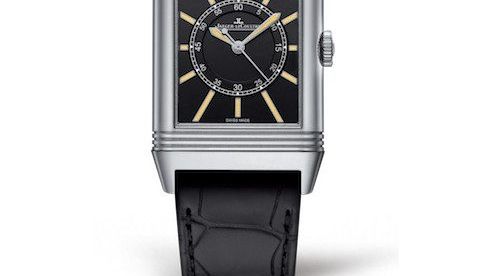

Words: Hamish Roy
In the world of horology, the term ‘icon’ is sometimes used a little liberally. For a watch to become iconic, it must first fulfil several demanding criteria. Firstly, it must showcase brilliant design that is both innovative and instantly identifiable. It must also remain relevant irrespective of the trends that come and go with the passing years. And finally, it requires the building of a reputation, which takes time. To call a watch iconic is, then, high praise indeed. The Jaeger-LeCoultre Reverso is one of the few that is truly worthy of it.
Conceived in the 1930’s, the Reverso embodied the new values of the Art Deco movement, offering an elegant, progressive design that was fitting of its age. The rectangular shape celebrated the rise of geometric patterns and shapes – the new, modern forms that would dominate 1930’s design. The height-to-width ratio of the watch is based on the ‘golden ratio’, the mathematical ratio found in nature that is said to be pleasing to the human eye. Now celebrating its 85th year, the Reverso still remains true to that celebrated form; it may be continually re-inventing itself, but each new formulation is based on that same balanced design.
In celebration of the Reverso’s 85th Anniversary, we take a look at its life, which began not in Switzerland, but the British Raj…
1931
While in India on business, Swiss businessman and watch collector César De Trey attends a polo match at a British Army officers club. Having smashed the crystal of his watch during the game, an officer approaches De Trey, challenging him to design a timepiece that can withstand the rigours of a game of polo. Upon returning to Switzerland, De Trey entrusts this challenge to Jacques-David LeCoultre, and the first Reverso is born. First marketed as an early sports watch, it has a unique case that allows the dial to be flipped over in order to protect the crystal from blows.
Image: An early advert for the Reverso in a French publication
1934
Jaeger-LeCoultre introduce the first model with a small second counter at the six o’clock position on the dial – a style that remains popular today.
The 1934 Reverso in gold. Image: Kleanthous antiques
1943
With the approach of the end of the Second World War, Art Deco style falls in popularity. Over the next 30 years, mechanical watches also experience a decline, neglected in favour of the Quartz movement.
1972
Italian watch dealer Giorgio Corvo, the brand’s sole distributor in Italy, notices 200 unused Reverso cases while visiting the Jaeger-LeCoultre factory. Purchasing all 200, he installs movements and manages to sell all of them in Italy. Seeing the enduring appeal of the Reverso, and convinced that it remains a desirable model, Corvo begins talking to Jaeger-LeCoultre about relaunching the watch.
1982
A decade and 200 re-appropriated Reverso cases later, Jaeger-LeCoultre resurrect the watch, releasing the slightly squarer Reverso II. They continue developing the watch, and three years later, in 1985, they release the first water resistant model.
A 1985 Reverso II in yellow gold. Image: Bachmann & Sher
2011
Celbrating 80 years of the Reverso, Jaeger-LeCoultre releases the Tribute to Reverso 1931, paying homage to the original model.
The Tribute to Reverso 1931. Image: Fratello Watches
2016
On their 85th Anniversary Jaeger-LeCoultre expands their iconic Reverso range, including several models that celebrate the heritage of the watch. Here are some of our favourites.


